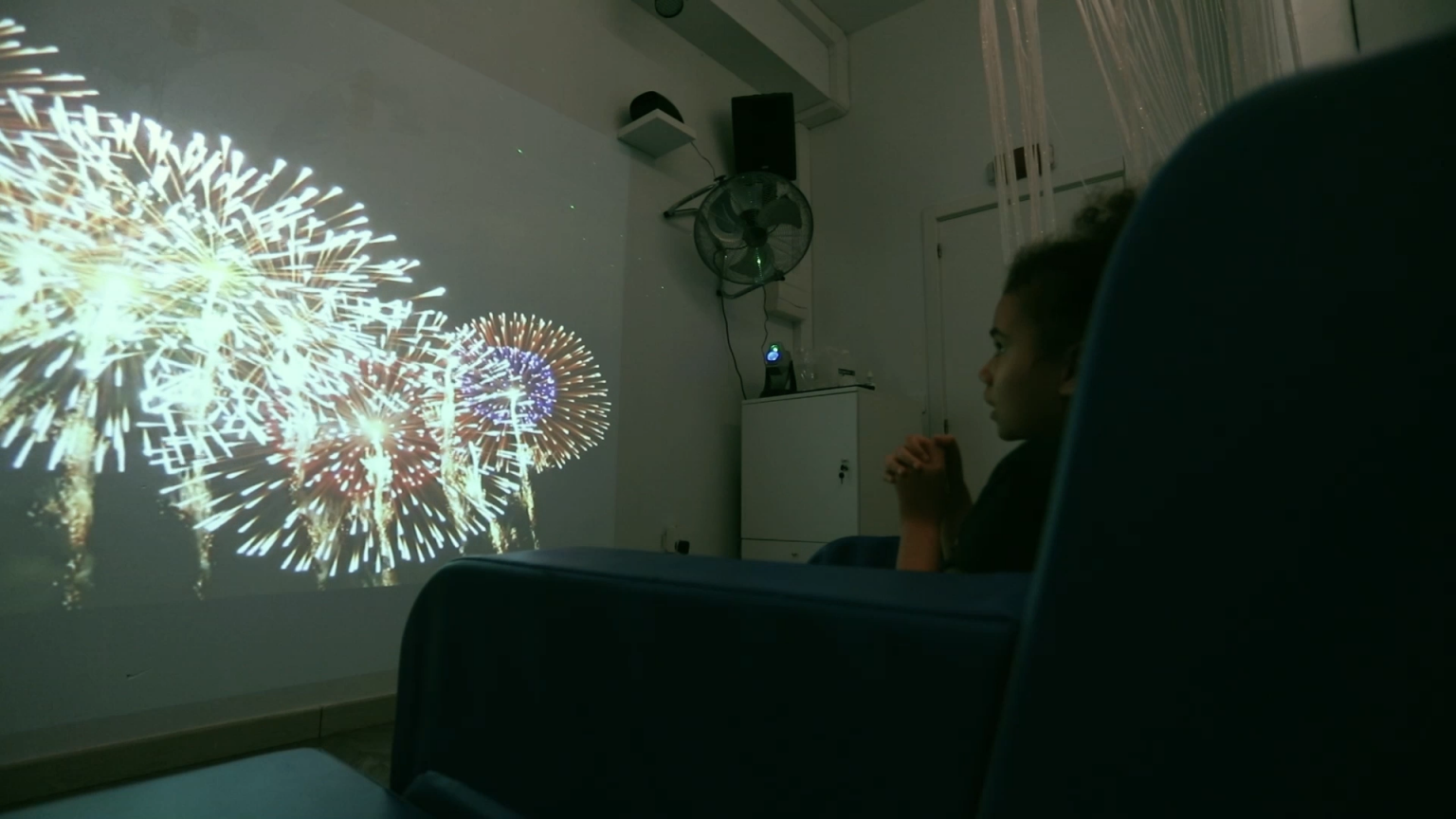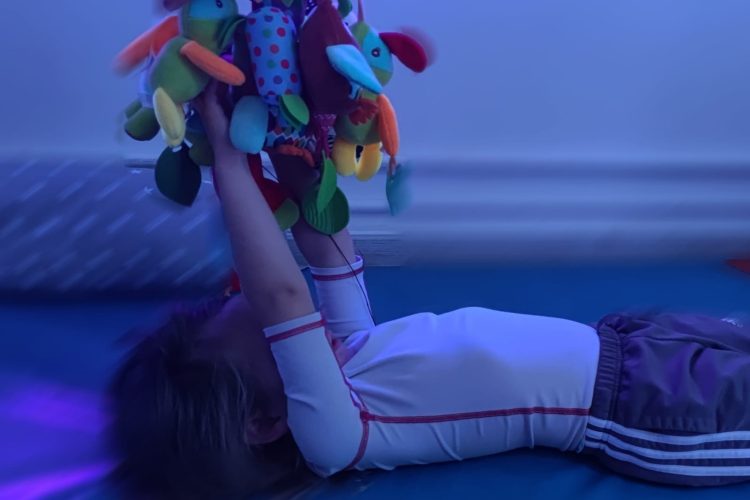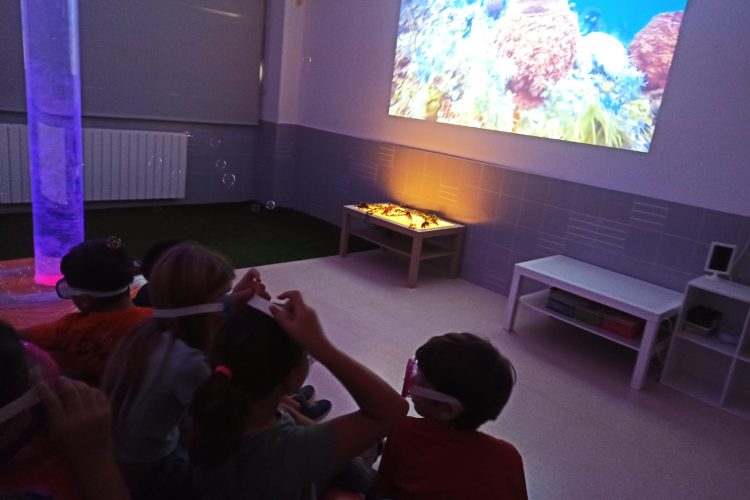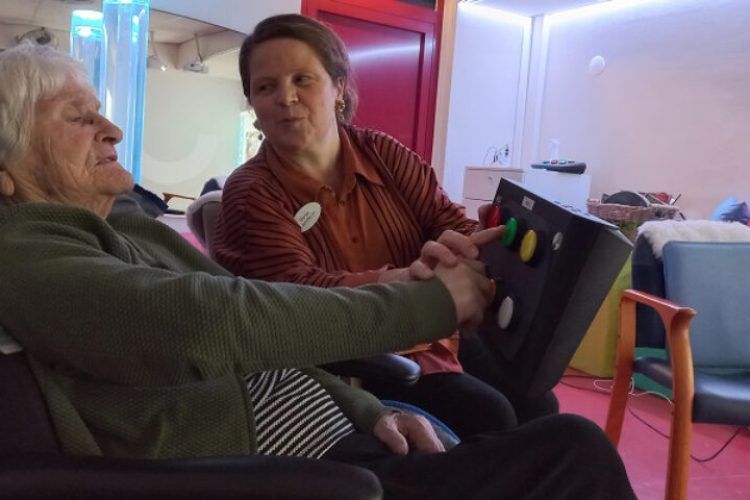Jennifer Arellano
Social Media & Content Manager at Qinera
Read more postsThe advanced therapeutic centre ‘Cromo Somos’ has graciously opened its doors to showcase how sensory stimulation therapy becomes a powerful ally for individuals affected by Rett Syndrome, neurodevelopmental disorders, and rare diseases.
Francisco Santiago, the center’s director, and pedagogical therapist Virginia Barragán, shed light on their utilization of the Qinera-exclusive Multisensory Room to enhance well-being, foster communication, and uplift spirits.

Rett Syndrome, a rare neurological disorder primarily affecting girls, presents challenges in neurological development. It can lead to regression in cognitive development, speech difficulties, and verbal communication obstacles, alongside symptoms such as progressive motor loss. While there may be no cure, treatments and therapies can significantly improve the quality of life for these individuals.
Multisensory rooms provide an ideal setting for supportive therapies, aiding girls and women in their speech, cognition, and social interaction challenges.
“Thanks to the room, we achieve more meaningful therapies, with improved visual focus, calming returns, and enhanced concentration on breathing, among other benefits facilitated by the room.” – Francisco Santiago, director of the Cromo Somos centre and founder of the Mi Princesa Rett Foundation.
The multisensory room offers a wide array of sensory stimuli to help girls and women develop and promote their senses. Thanks to the Qinera SHX System, all elements in the room can be activated simultaneously, creating an immersive experience controllable by therapists through a tablet.
With this technology, tailored sessions can be designed to promote, for example:
The room includes a wealth of audiovisual content designed for therapy, such as projecting a parachute drop, narrating a story, exploring the world and glaciers, or experiencing fireworks. In such instances, the vibration of the chair or the vibroacoustic bed allows users to feel the force of the explosions within their own bodies. Another element enhancing proprioception is the fibre optics strands, which, when placed on the body, enable individuals to experience and ‘touch’ the changing lights and colors.
Elements such as the vibroacoustic chair, synchronized with the room’s lighting elements, facilitate relaxation and a return to calm. With Qinera technology, a serene environment, such as a forest of trees, can be projected on the screen, while the chair vibrates in rhythm with the audiovisual content on the wall. Simultaneously, other elements in the room (tube, fiber, etc.) take on a soft green hue, with soothing music creating a calming atmosphere. These sensory activities help reduce anxiety and stress, providing a peaceful and secure space for users.
“With the elements incorporated by Qinera, our therapies have become much more meaningful. We obtain benefits that would be impossible without this room.” – Virginia Barragán.

Interacting with the various elements encourages active participation and aids in the development of cognitive and motor skills. Sensing the changing light and colors of the fiber optic strands while on the waterbed or engaging with the illuminated elements via the LED UV Spotlight projector helps activate and enhance concentration.
“The room allows us to offer experiences that individuals couldn’t attain in their daily lives alone.” – Virginia Barragán.
We can create fireworks, with strong vibrations and loud sounds—the chair vibrates, and so do they. The same applies to soap bubbles: they emerge when ‘it’s raining,’ and individuals get wet when they burst, experiencing the sensation firsthand.
The success of the multisensory room at Cromo Somos is largely attributed to the specialized team of therapists and professionals working there. These experts have experience in tailoring room activities to the individual needs of each person.
With the multisensory room, users receive information through their senses. Virginia affirms that ‘being able to communicate with someone who lacks spoken language allows you to understand their preferences, communicate, learn, and engage in leisure activities using a computer.’
How can we stimulate all the senses within a room? Through different sessions, users experience the world through their senses, accessing daily life experiences. At Cromo Somos, they achieve more meaningful therapies, improving visual focus, calming returns, and enhancing concentration on breathing, among other benefits promoted by the room.
“We are a reference point; other organizations visit us to see what we have and attempt to replicate it. We’re at the top when it comes to tool'” -Francisco Santiago.
Contact us at hello@qinera.com 📧

5 July 2024
Aiala Grajirena is a therapeutic pedagogy teacher at San Miguel School (Doneztebe). Since the 2020-21 school year, they have been developing a project for a...

13 June 2024
One of the main questions that arises when considering installing a multisensory classroom in a regular school is whether it is really a good investment....

10 May 2024
Recently, the care home De Stichtse Hof, part of Vivium Zorggroep, inaugurated a brand new multisensory room with the interactive Qinera technology. This technology combines...